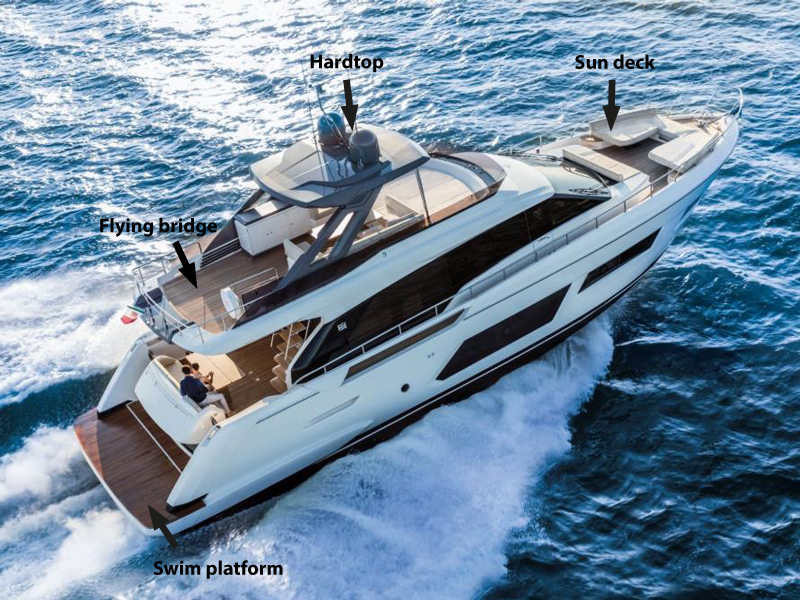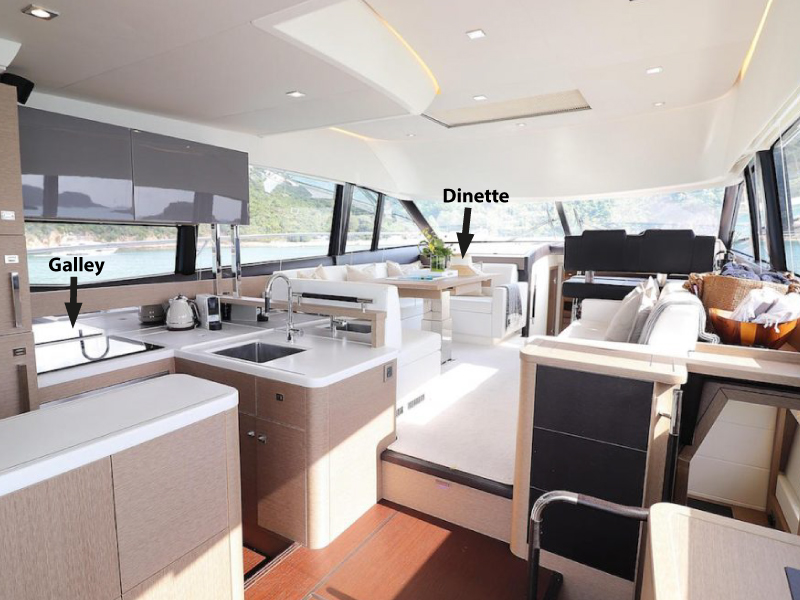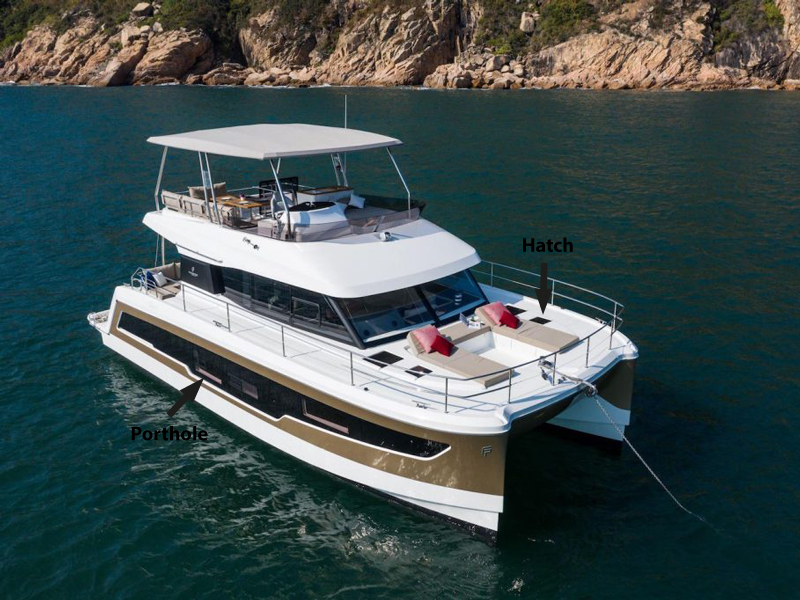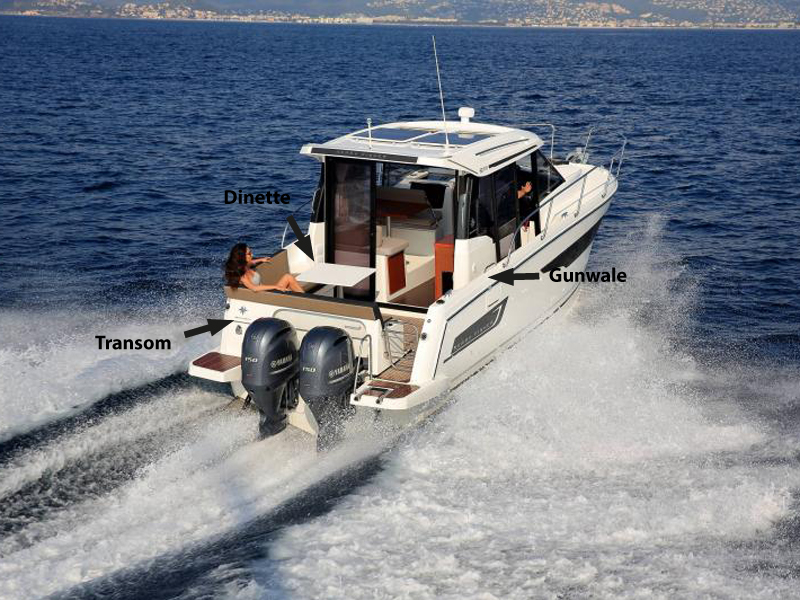
The anatomy of a yacht : what all the important bits are called
Here are the names of almost every single part of a boat
In their simplest forms, boats are quite straightforward machines, but even so, they have specially named parts that are not usually used in the parlance of landlubbers. As these ocean-going vessels increase in size and complexity, of course, so too does the number of their parts. Even so, most of the parts are similarly named on small 15-footers and container-carrying behemoths alike. Let’s begin, in alphabetical order.

Aft : This refers to the back or rear of the yacht.
Anchor : It’s the heavy object that is dropped into the water to keep the vessel from floating away. Interestingly, different anchor shapes are used for different seafloors i.e. sand and rocky floors have different optimum shapes to improve the anchor’s efficiency.
Ballast : Any weight (water, metal, stone) placed at the lower parts of the hull that will improve stability of the boat.
Beam : The beam is the widest part of the yacht.
Berth : This is any area of the yacht that is used for sleeping.
Bilge : The lowest part of the hull that will sometimes collect water, and so the water will need to removed manually, or pumped out by a bilge pump.
Bow : It’s the opposite of the aft – a bow is the pointy front of the boat, and multihulls will have more than one bow.
Bridge : This is where all the controls of a yacht are located, and is sometimes called a cockpit.
Bulkhead : It is the wall within the hull of a boat that is often used for structural strength, which also doubles up as a separator for living spaces.
Cabin : Private living areas on a boat are called cabins, where the berths are usually found.
Casting deck : This is a dedicated area at the aft or bow of the boat that is elevated for fishing, and it can also be called a casting platform.
Cleat : Both on a boat and at the dock, a cleat is the fitting to which a sailor will tie or loop a line.

Cockpit : The cockpit is the enclosed area on the deck from which the boat is steered, and one can say that the bridge is part of the cockpit.
Console : It is when you soothe a sad friend… we kid. The console is the structure that holds the helm and instruments, and there is usually storage space behind it.
Deck : All exterior floors of a boat is called the deck.
Dinette : Any area with table and seating that is used for the consumption of food can be called a dinette, although it is usually a smaller space relative to a full-sized dining room.
Draft : A boat’s draft is the minimum depth of water it needs in which to float. This is an important detail if boaters do not want to get stuck on sand banks or shallow waters.
Flying bridge : It’s a bridge, but up top. Usually shortened to flybridge, this is the area above the cockpit that is accessed via stairs that will usually hold a second helm and a social area.
Galley : This is the fancy name for kitchen on boats.
Gunwale : This is also called a gunnel – it is the top edge of the boat hull, where the deck and hull come together.
Hardtop : Generally, a hardtop is the name given to any ‘roof’ that is permanent or ‘hard’, and it can be over the cockpit area, or even over the flybridge.
Hatch : Any opening in the deck or ceiling of the cabin that is a window or door is called a hatch. The saying ‘batten down the hatches’ are referring to these openings. A batten is a stick or rod used to hold down a canvas that will close off the hatch, and this is done to prepares for battle or bad weather.
Head : A bathroom or toilet on a boat is called a head. This is because back in ye olde days, a ship’s toilet was placed at the bow, where a wooded figurehead was carved, where the natural wave action can wash it out.
Helm : This refers to the steering mechanism of the yacht.
Hull : The hull is the part of the yacht that floats in the water, and will usually have unseen framework inside it for support and a hard outer shell.

Keel : This is a part of the hull that runs down the entire middle from bow to stern, and it is the foundation (or backbone, if you will) of a boat.
Knots : 1 knot ( or 1 kn) is 1 nautical mile per hour, and 1 nautical mile is equivalent to 1.15 regular miles, or 1.852 kilometers. This means that 1 knot is simply 1.852 km/h, and 100 km/h is equivalent to 54 knots.
Line : Any rope used on a boat is called a line, and of course, tying proper knots is a great skill to learn, even for pleasure boaters.
Livewell : Pronounced ‘live’ as in ‘alive’, this is a tank that keeps fish or bait alive during fishing.
Mooring : It’s like a cleat at the dock, but larger. This is the place where you secure a line from the boat and anchor her safely at the dock.
Port : If you’re looking at the front of the yacht, the port side is the left side of the yacht.
Porthole : Portholes are the windows on the yacht, usually located on the hull.
Propellers : Of course, these are the blades of the engine that spin fast and move a motoryacht through the water.
Rig : This is the general term given to the sails as well as any equipment used to control them, while ‘rigging’ usually refer specifically to the equipment used.
Starboard : If you’re looking at the front of the yacht, the starboard side is the right side of the yacht.
Stern : This is when the yacht is angry with you. Seriously though, the stern is the back part of the boat.
Swim platform : A structure that may be fixed or motorised at the transom or aft of the boat that makes movement from boat to water and back easier.
T-top : Unlike hardtops, T-tops are structures that hold a canvas roof in place. They are lighter, and can often be removed, unlike a hardtop.
Transom : If the bow is the pointy front of a boat, the transom is the flat rear end of the boat. Outboard motors are mounted here, and pleasure boats will usually have a swim platform here too, especially if they have inboard engines.
V-berth : This is a berth located at the nose (or bow) of a boat. Since bows are naturally pointy, the berth is shaped in a V, hence the name.
Let’s conclude
Let’s end with a final fun fact. The term yacht comes from the Dutch word jaght, which translates as ‘hunter’. This was the name given to the light and fast sailing vessel used in the old days by the nation’s navy to chase down ne’er do wells at sea. In 1660, the English King Charles II was carried home in one, and so the term passed into common parlance as a vessel used to carry important people.


